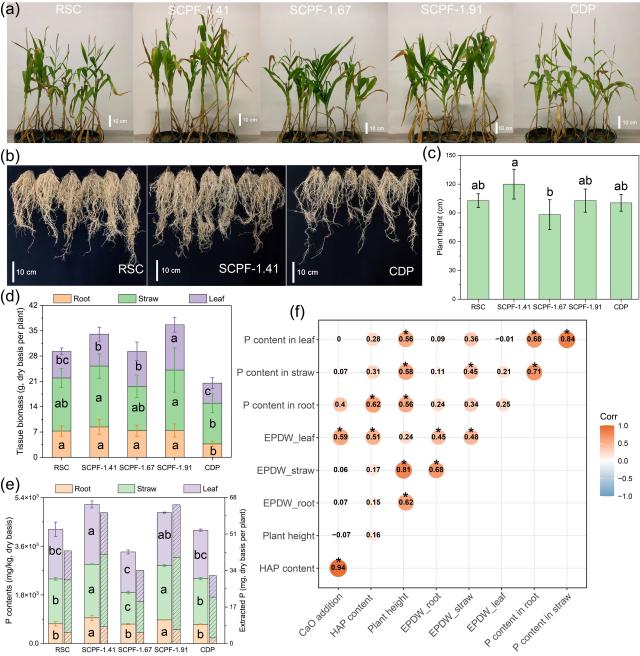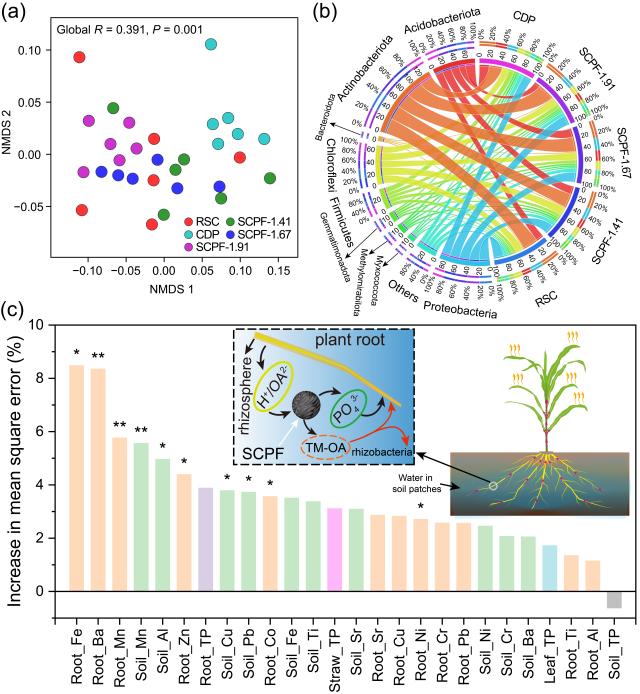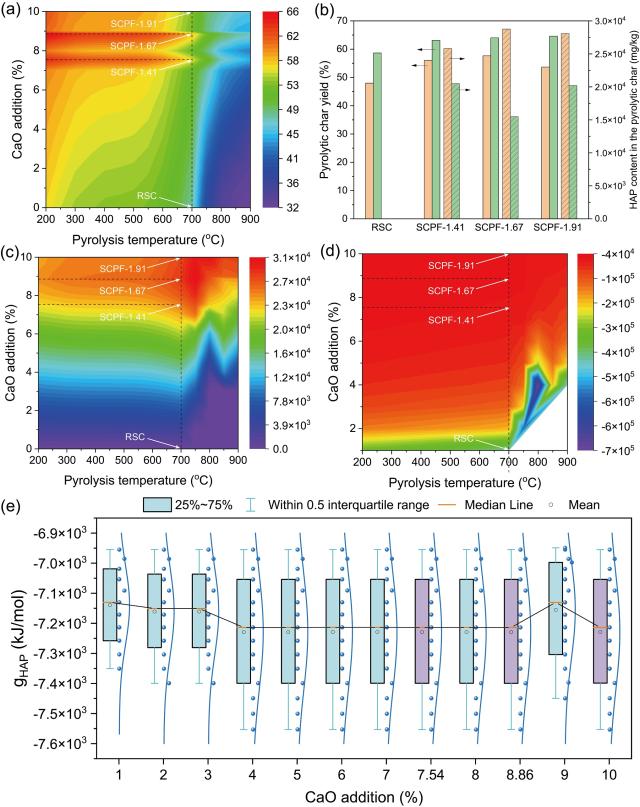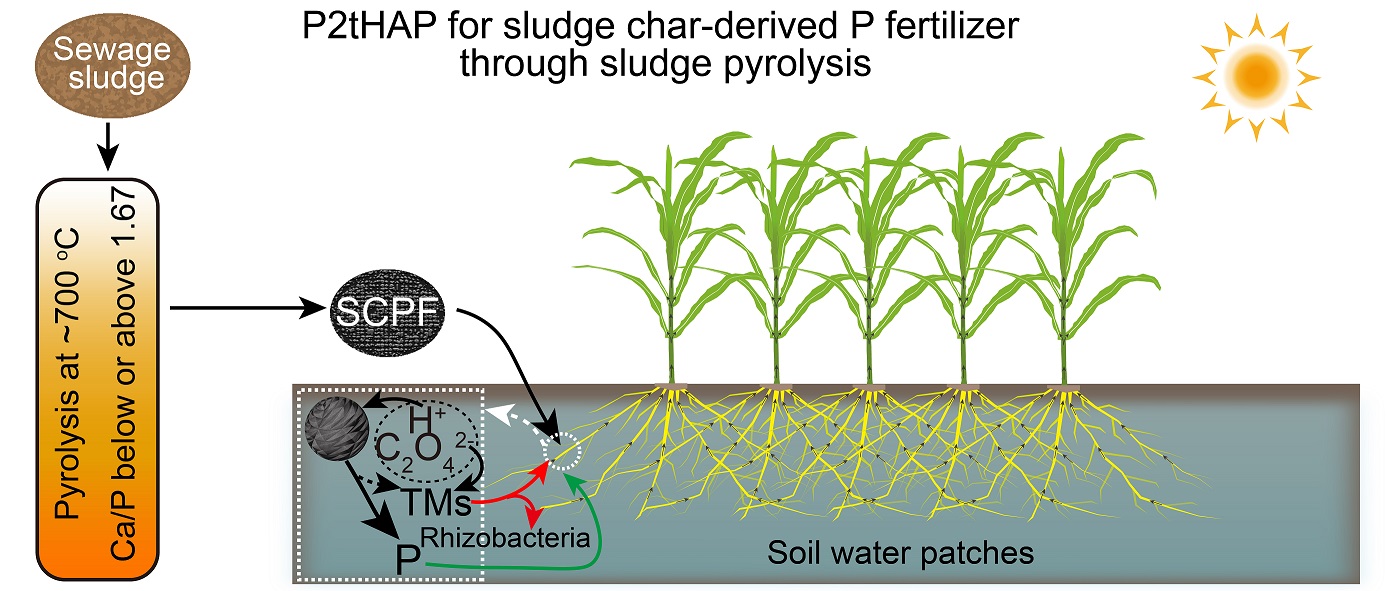
Sewage sludge (SS) is an essential product of the treatment of municipal wastewater via activated sludge-based methods. After wastewaters are purified and become clean to be drained, the other contaminants undegraded by microbes and the derivatives are retained in SS. With the surge of carbon neutrality campaign, the degree and quality of how to efficiently and sustainably cope with SS issue indeed decide the resiliency of a wastewater treatment process adopted in modern wastewater treatment plants (WWTPs) when facing outside abnormal cases and shocking. Due to the difference in habituative behavior, urban development, and natural geographical condition for our country, those sophisticated SS disposal approaches adopted in developed countries are hard to be directly used for our country’s SS. The unique traits, i.e., high sand composition, low organic matters, and unavoidable toxic matters exacerbate the adaptability of these matured methods in handling our SS. With the initiative of high-quality development progressively moving on, seeking a tradeoff between realizing efficient, sustainable SS treatment and maximizing its resource property prospects to break the dilemma by which wastewater treatment sector is thornily challenged.
With the continuous generation of SS in a WWTP, the yield of which is fast increased, these methods developed based on thermochemical conversion and disposal are gaining much attention. Among them, pyrolysis technique appears to offer an innovative solution to cope with those generated SS, particularly in our country’s SS. This is mainly ascribed to the distinctive trait of pyrolysis technique, that is, relatively lower temperature, rapid volume reduction, effective decontamination, and tunable derivatives, when compared to combustion and gasification and their variants. It is anticipated that developing a customized pyrolysis process, well coping with the compositional traits of SS in China, will be of great importance to guide the treatment of SS gigantically produced in practice.
Differentiating from previous studies on SS pyrolysis and obtained results,,Prof. Li’s group performed a deeply insight into key elements evolution behaviors during sewage sludge pyrolysis, and first time proposed the new concept “Sewage Sludge Ash Matrix (SSAM)”. By virtue of this concept, a tradeoff between valuable product purification and in-situ pollutant mitigation can be achieved during sewage sludge pyrolysis (see Figure 1). Furthermore, in-situ pyrolysis experiments combining with thermodynamic calculations demonstrated that heat capacity modulation of SSAM is the key to reach the tradeoff during pyrolysis. Related results in the article entitled “Key element course-tracked copyrolysis of sewage sludge and biomass for resource recovery and pollution control through kinetic and thermodynamic insights” were published at Energy Conversion and Management on Feb. 19, 2023.

Figure 1. Tradeoff strategy of valuable product purification and in-situ pollutant mitigation during sewage sludge pyrolysis based on key elements course-tracked conversion.
Besides the indigenous carbon resources, the carried phosphorus (P) potentiates SS as a renewable secondary P source, especially with the circumstance of gigantic and continual generation of SS in WWTPs. As a non-renewable and life-essential element, P and its global sustainability are facing a challenge induced by the rapid depletion of currently limited phosphate rock reserves. As the P anthropogenically consumed during human life can be eventually collected in SS via sewage pipeline system, mining those P in SS and other analogues is promising to offer an innovative solution to cope with the problem of global P sustainability. It should be mentioned that the unavoidably present toxic metals (TMs) indeed escalate the difficulty in recovering and recycling of P in SS for our country. Consequently, making a balance between P efficient reuse and TMs ecological risk abatement is becoming a crucial challenge addressing SS sustainable valorization.
In previous work, Prof. Li’s group designed and synthesized a functionality-specific nanostructured hydroxyapatite (nano-HAP) that targetedly delivered carried P to plant rhizosphere for efficiently subsequent uptake and use. Moreover, a new “water-fertilizer” synergetic linkage was constructed to elucidate the underlying mechanism of tailored nano-HAP (Figure 2), which will contribute to the design of other new nano agrochemicals. Related results in the article entitled “Morphology‐Tailored Hydroxyapatite Nanocarrier for Rhizosphere‐Targeted Phosphorus Delivery” were published at Small on Jan. 4, 2023. In addition, the group synthesized a new nano-HAP that hydrothermally catalyzed insect biomass converted from food waste to valuable chemicals such as furfurals (Figure 3). Related results in the article entitled “Exploration of Converting Food Waste into Value-Added Products via Insect Pretreatment-Assisted Hydrothermal Catalysis” were published at ACS Omega on May 18, 2023.

Figure 2. New mechanism related to rhizosphere-targeted delivery of tailored nano-HAP to replenish plant-needed P under a “water-fertilizer” synergetic linkage.

Figure 3. Nano-HAP hydrothermally catalyzed organic biomass to produce valuable furfurals chemicals.
Based on the fertilizer functionality of HAP and attained knowledge of its synthesis route and structure-property relationship, the group wondered, is it feasible to targetedly transform P in SS to HAP during pyrolysis? At the same time, is it possible to effectively compromise bioavailability of those TMs retained in derived pyrolytic char? Inspired by the underlying trait of thermochemical process of kinetics- and thermodynamics-driven P transformation to HAP during SS pyrolysis, Prof. Li’s group developed a new method to controllably achieving P targeted transformation to hydroxyapatite, which is named P2tHAP. After adopting this new method, the obtained sewage sludge char-derived phosphorus fertilizer (SCPF) exhibits comparable and even superior P supply competency when compared to the chemically synthesized P fertilizer (CPF). The maize cultivation experiments demonstrated that, the SCPF is promising to replace CPF to supply plant-needed P and can be regarded as a waste-sourced renewable P fertilizer (Figure 4).

Figure 4. Agronomic performance of maize plants when applied with SCPF as a P nutrient supplier. (a) Real images of harvested maize plants after 90-day growth. (b) Plant root. (c) Plant height. (d) Biomass weight of segregated parts (root, straw, and leaf). (e) Contents of P (bare bars) and the amount of extracted P (shaded bars) in each segregated part of harvest plants. The amount of extracted P per plant was based on the mean values of separate plant tissue biomasses in (d) and P contents in (e). Statistical significance in (c), (d) and (e) was evaluated using one-way analysis of variance (ANOVA) at P < 0.05 (n = 6). (f) Pearson’s correlation coefficient of these parameters related to the agronomic efficacy of the SCPF. Asterisk denotes the significance at P < 0.05 (n = 6). The abbreviations EPDW_leaf, EPDW_straw and EPDW_root represent the weight of leaf, straw and root in each plant dry weight (EPDW), respectively.
Further, detailed analyses of these TMs in plant tissues (root, straw, and leaf) and non-rhizosphere soil were conducted, to deeply investigate migration and conversion behaviors of those TMs liberated when plants metabolized the SCPF to acquire P nutrient. As shown in Figure 5, when plant took up P from SCPF, these TMs were liberated in various degrees, but failed to enter the inside of the plant tissues, particularly the aboveground biomass, when compared to the control group (fertilized with CPF). The TMs including Al, Cu, and Ni were retained in bulky soil and led to a various increment of their concentrations when compared to those in soil background. Root scanning electron microscopy equipped with X-ray energy dispersive spectroscopy (SEM-EDS) supported that these liberated TMs are retained on the surfaces of plant root tissue.

Figure 5. TM distributions in maize plant tissues and the bulky soil: the contents of Al(a), Fe (b), Ni (c), Cu (d), Mn (e), and Zn (f). Zn was not determined in the soil, meaning that the Zn immobilized in the sludge char couldn’t rebound to the environment. The lowercase letters indicate significance with decreasing order of degree, while no any letters mean no significance, tested using one-way ANOVA at P < 0.05 (n = 3). (g) SEM-EDS elemental mappings of the maize primary roots.
Considering the indispensable role of native microbes in engaging P acquisition, uptake, and use for plant P nutrient need, 16S rRNA sequence analyses were performed on the collected rhizosphere soils. As shown in Figure 6, the plant root-associating and soil-containing TMs showed relatively higher significances than total phosphorus (TP)-related factors, suggesting that the present TMs in plant roots and bulky soils were responsible for the difference of identified rhizobacterial communities. By virtue of plant-indigenous phosphate starvation response elucidated in Figure 2, small organic acid in root exudate was responsible for P release from SCPF and also for TMs conversion and transport from bulk soil to plant root, which was further evidenced in the ex-situ soil experiments on P and TMs release from SCPF.

Figure 6. Change of rhizobacterial community after the application of the SCPF was applied. (a) Non-metric multidimensional scaling (NMDS) diagram of identified rhizobacteria across maize plants fertilized with different P suppliers. (b) Chord diagram of the rhizobacterial communities at phylum level for maize plants fertilized with different P suppliers. (c) Identification of potential environmental factors driving the change of rhizobacterial community across these assay runs. Asterisk denotes the significance at P< 0.01(**, n = 6) and P < 0.05 (*, n = 6). The embedded diagram illustrates that the released TMs were coordinated by OA anionic moieties and then interacted with the rhizobacterial communities. The water uptake via plant root networks supported their interactions.
To further have an insight into the underlying mechanism of the P2tHAP technique, kinetic and thermodynamic calculations were conducted to reveal the process of P targeted transformation to HAP during SS pyrolysis. The kinetic results indicated that Ca/P molar ratio of SS feedstock could modulate gas-solid reactions occurring during SS pyrolysis, and consequently impacting heat and mass transfers in the P2tHAP. The thermodynamic results confirmed that the stable molar Gibbs free energy of HAP (~ ![]() ) with the change of Ca/P molar ratio of SS feedstock during sludge pyrolysis sustained the progress of P2tHAP, thereby leading to P controllable transformation (Figure 7).
) with the change of Ca/P molar ratio of SS feedstock during sludge pyrolysis sustained the progress of P2tHAP, thereby leading to P controllable transformation (Figure 7).

Figure 7. Thermodynamic calculations related to the P2tHAP during sludge pyrolysis. (a) Pyrolytic char yield (%). (b) Comparison of pyrolytic char yield (bare bars) and HAP content (pattern-filled bars) between the calculated (orange bars) and the experimental (green bars). The pyrolytic chars obtained in a horizontal tube furnace were selected for comparison, which were denoted in the plots. (c) HAP content in the obtained char (mg/kg). (d) Total Gibbs energy of entire pyrolysis system per molar HAP per (kJ/mol). (e) Calculated molar Gibbs energy of HAP formed during simulated pyrolysis processes (from 200 oC to 900 oC) with different additions of CaO. The three CaO additions corresponding to SCPF-1.14 (7.54%), SCPF-1.67 (8.86%) and SCPF-1.91 (10%) were highlighted.
In summary,the developed P2tHAP can realize pricese regulation of kinetic and thermodynamic behaviors during SS pyrolysis through the change of Ca/P molar ratio of sludge feedstock. As a result, the prepared SCPF renders mechanistic synergies on interaction interfaces bteween plant phosphate starvation response, root exudate and TMs coordination, and rhizobacterial evolution (Figure 8). The outcome of this work offers a new valorization mode of SS beyond conventional waste treatment, which will be learnable to develop other innovative sustainable valorization methods of analogous P-abundant/enriched wastes. Related results in the article entitled “Targeting phosphorus transformation to hydroxyapatite through sewage sludge pyrolysis boosted by quicklime toward phosphorus fertilizer alternative with toxic metals compromised” were published at Renewable and Sustainable Energy Reviews on Jun. 28, 2023.

Figure 8. Illustrative diagram on sustainable valorization of sewage sludge-containing P sustained by the developed P2tHAP technique.
Dr. Siqi Tang and PhD student Ouyang Li are the first author of the abovementioned articles, while Prof. Dr. Zhenshan Li is the corresponding author. These studies received financial support from National Natural Science Foundation of China and National Key R&D Program of China.
Detailed list of abovementioned articles
[1] S. Tang, J. Liang, X. Xu, Y. Jin, W. Xuan, O. Li, L. Fang, Z. Li, Targeting phosphorus transformation to hydroxyapatite through sewage sludge pyrolysis boosted by quicklime toward phosphorus fertilizer alternative with toxic metals compromised, Renewable and Sustainable Energy Reviews 183 (2023) 113474. https://doi.org/10.1016/j.rser.2023.113474.
[2] S. Tang, J. Liang, O. Li, N. Shao, Y. Jin, J. Ni, X. Fei, Z. Li, Morphology-Tailored Hydroxyapatite Nanocarrier for Rhizosphere-Targeted Phosphorus Delivery, Small 19(14) (2023) 2206954. https://doi.org/10.1002/smll.202206954.
[3] S. Tang, G. Tan, J. Liang, O. Li, W. Xuan, Z. Li, Key element course-tracked copyrolysis of sewage sludge and biomass for resource recovery and pollution control through kinetic and thermodynamic insights, Energy Conversion and Management 280 (2023) 116830. https://doi.org/10.1016/j.enconman.2023.116830.
[4] O. Li, J. Liang, Y. Chen, S. Tang, Z. Li, Exploration of Converting Food Waste into Value-Added Products via Insect Pretreatment-Assisted Hydrothermal Catalysis, ACS Omega 8(21) (2023) 18760-18772. https://doi.org/10.1021/acsomega.3c00762.